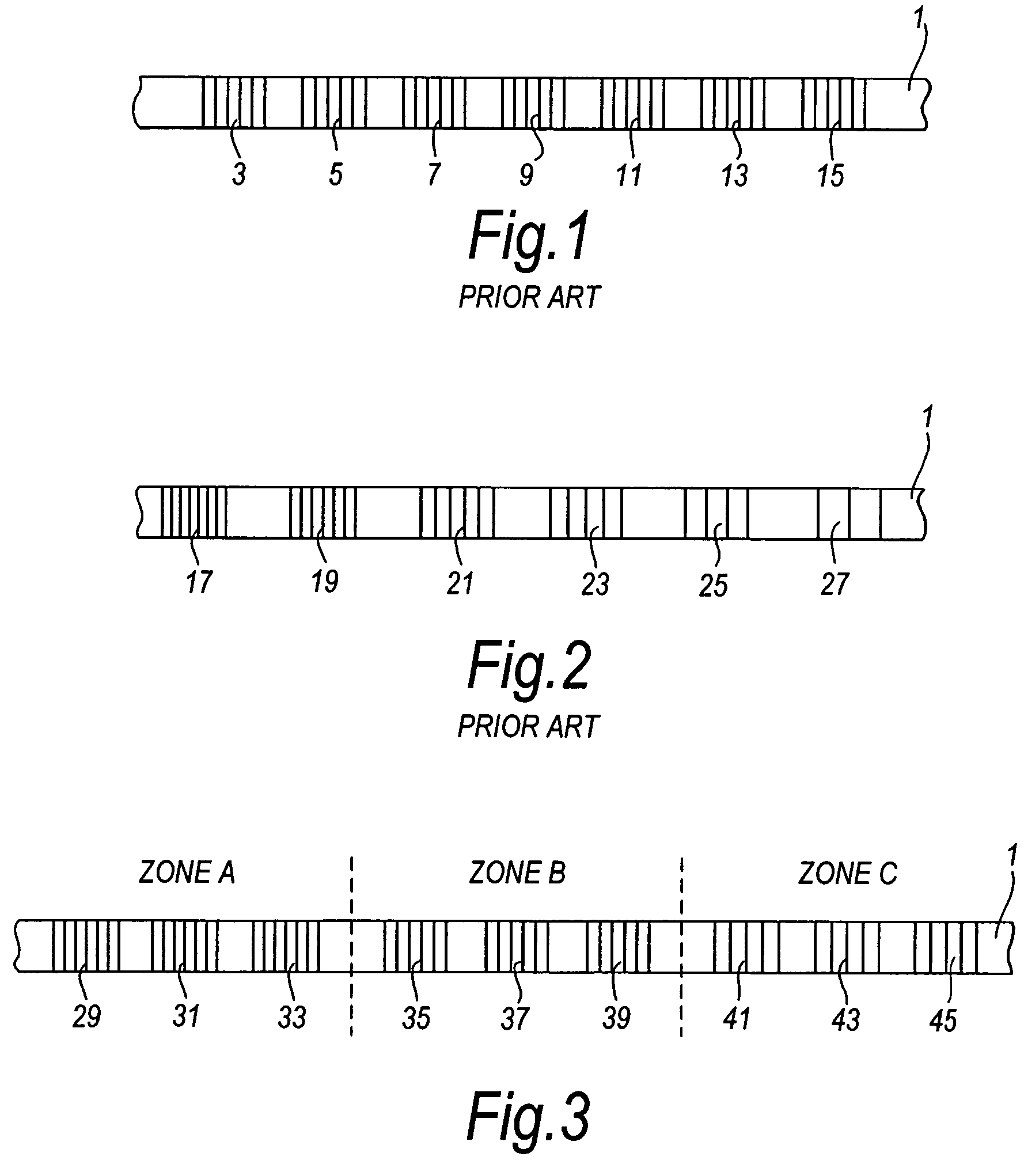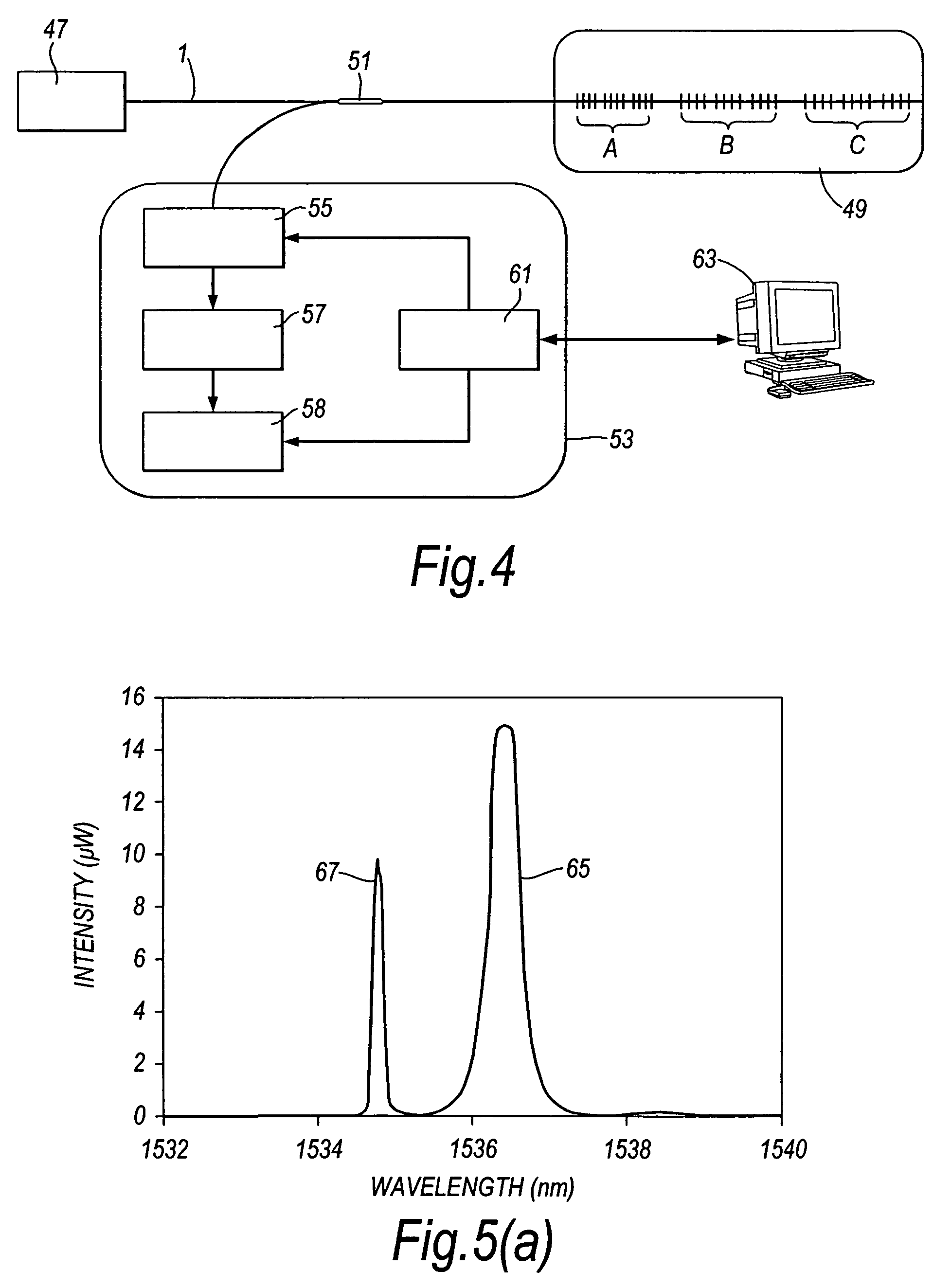Fibre Bragg grating sensors
a technology of bragg grating and sensors, which is applied in the field of fibre optic cables, can solve the problems of affecting the detection accuracy, and reducing the sensitivity of the prior art, so as to improve the sensitivity to detection and improve the sensitivity. the effect of short length
- Summary
- Abstract
- Description
- Claims
- Application Information
AI Technical Summary
Benefits of technology
Problems solved by technology
Method used
Image
Examples
Embodiment Construction
[0025]FIG. 1 shows a prior art arrangement of a fibre optic cable 1 with a plurality of substantially identical fibre Bragg gratings 3 to 15 formed thereon, each fibre Bragg grating possessing the same grating pitch / period. A fibre Bragg grating sensor could be created utilising such a fibre optic cable 1. In such a sensor, the Bragg wavelength of the reflected light from each fibre Bragg grating 3 to 15 would be the same due to the identical grating period of each fibre Bragg grating. If a spatial and / or temperature variation was to occur in the vicinity of, for example, fibre Bragg grating 11, the Bragg wavelength of the reflected light from fibre Bragg grating 11 would be shifted because the distance between adjacent elements of the grating 11 is altered. This wavelength shift could be detected, and so the spatial and / or temperature variation can be sensed. The problem with this prior art arrangement is that the Bragg wavelength of the reflected light from each fibre Bragg gratin...
PUM
| Property | Measurement | Unit |
|---|---|---|
| length | aaaaa | aaaaa |
| length | aaaaa | aaaaa |
| grating period | aaaaa | aaaaa |
Abstract
Description
Claims
Application Information
 Login to View More
Login to View More - R&D
- Intellectual Property
- Life Sciences
- Materials
- Tech Scout
- Unparalleled Data Quality
- Higher Quality Content
- 60% Fewer Hallucinations
Browse by: Latest US Patents, China's latest patents, Technical Efficacy Thesaurus, Application Domain, Technology Topic, Popular Technical Reports.
© 2025 PatSnap. All rights reserved.Legal|Privacy policy|Modern Slavery Act Transparency Statement|Sitemap|About US| Contact US: help@patsnap.com



